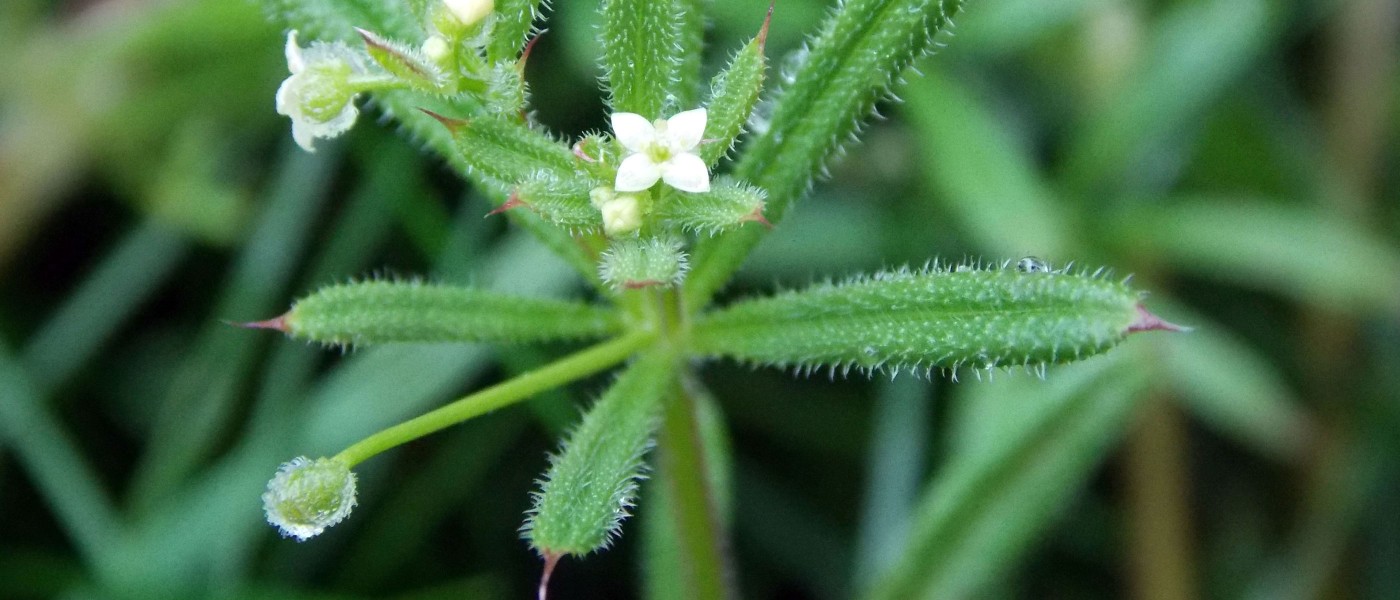Weed of the Month: Cleavers
Galium aparine, or cleavers, is the type of weed that is probably already stuck to you before you even take notice of it.
My first encounter with cleavers included spending a good ten minutes peeling off the tiny fuzzy fruit from my gloves, sleeves, socks, pants, and hair. As annoying as it felt at the time, there’s something to be said about the impressive nature of weeds whose form and resourcefulness allow them to outcompete other plants in so many categories of basic survival, from seed dispersal to gaining ground and finding sunlight.
Native to Eurasia, cleavers have an extensive global presence—they are naturalized in most of North America and in all U.S. states except Hawaii, as well as Australia, Greenland, and some parts of South America.
Galium aparine is an annual weed that has a weak-stemmed, creeping habit. The stems—boasting whorled leaves and tiny white flowers that bloom in spring—can grow from three to six feet in length. Stems, leaves, and fruits are all covered in hairlike, hooked-shaped bristles that easily latch onto other plants, animals, and people. This Velcro-like quality is what makes cleavers such excellent hitchhikers, and what has allowed them to be so successful in their proliferation.
The species epithet aparine comes from the Greek word meaning “to seize.” In addition to cleavers, Galium aparine also goes by stickywilly, grip grass, catchweed bedstraw, goosegrass, sticky weed, sweetheart, and a host of other common names.
Cleavers are edible and have been used as a medicinal plant, mostly as a diuretic in the form of a tea made from the dried stems and leaves. The tiny fruits can be dried and roasted to make a coffeelike drink—Galium aparine, after all, belongs to the Rubiaceae, or coffee family. Young shoots can be added to salads and eaten raw, though you might prefer to skip the bristly texture and boil them first, the same way you would prepare stinging nettle. Cleavers can be easily molded into a netted bunch, allowing them to be used as a natural strainer and a stuffing for mattresses.
You might find cleavers in moist, shady areas, scrambling up nearby shrubs and plants they use to lift themselves up closer to the sun. Weeding cleavers can be a satisfying process. Locate the center of the plant where the stems meet the roots at ground level. The stems are prone to snapping, so pull gently, being sure to take the roots with you. It’s best to weed before the flowers and fruit develop and it reseeds, lest you, too, endure the tedious task of picking them off your clothes. They are more than happy to journey with you, wherever you might go.




